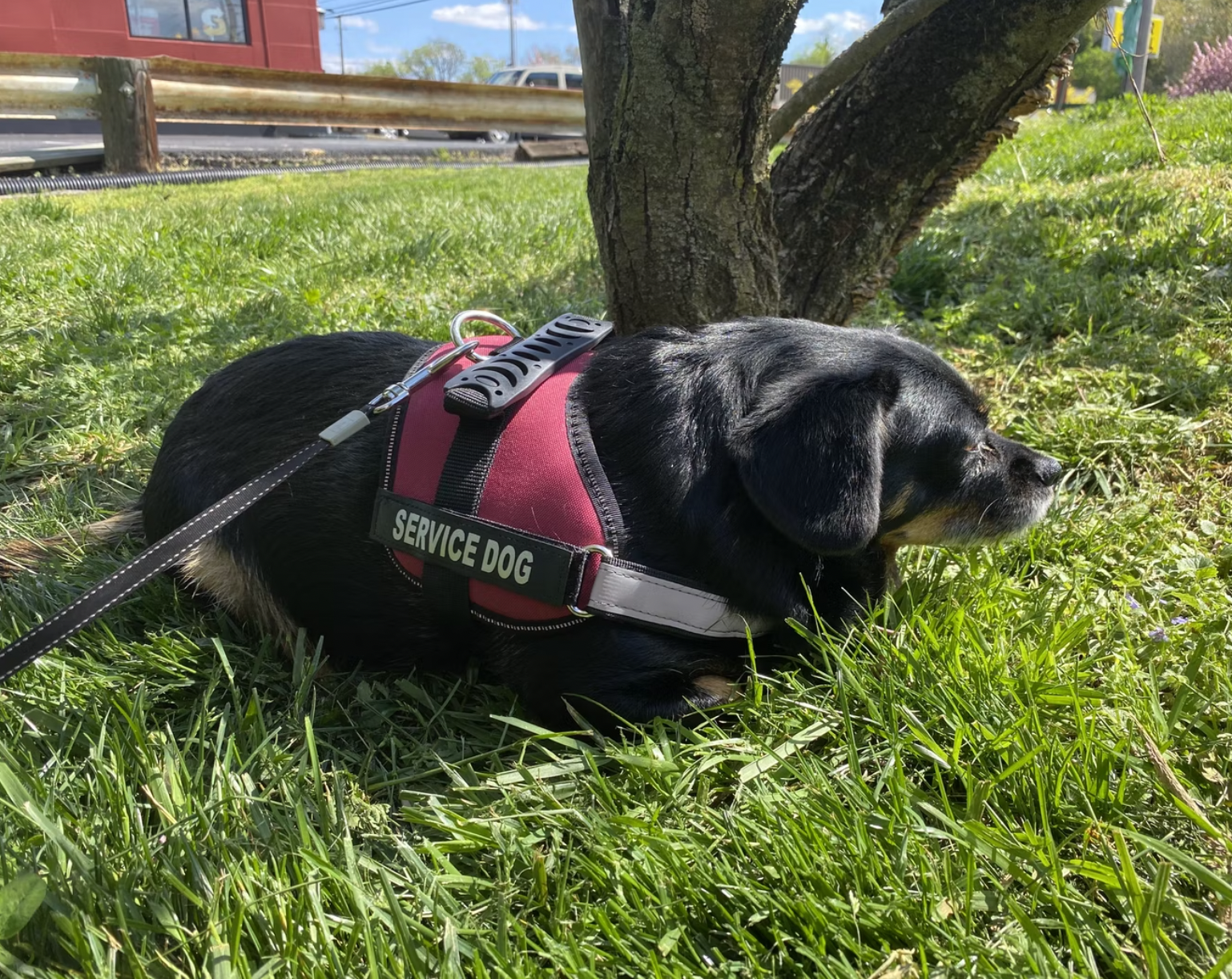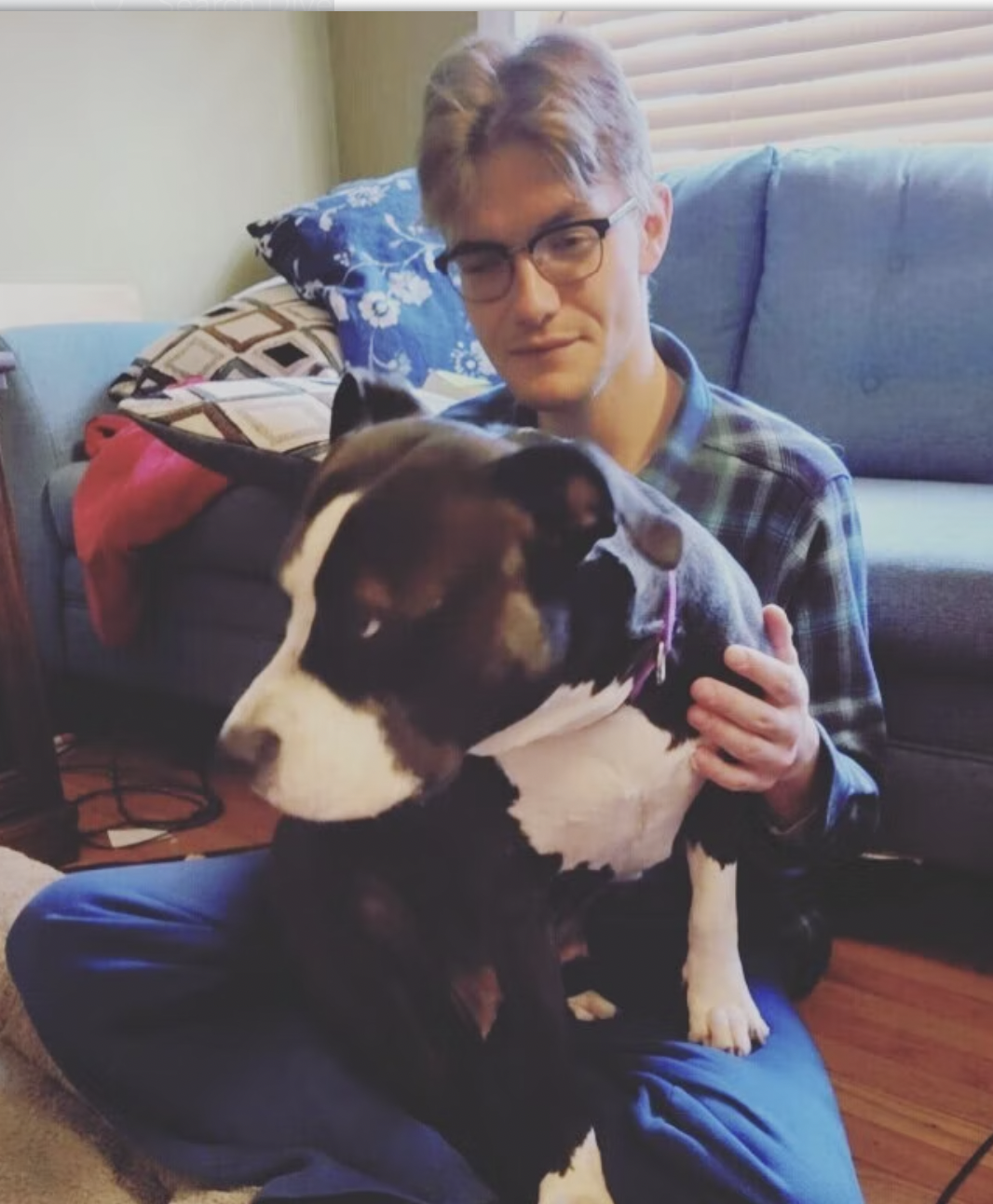Co-written with Arielle Dance, PhD, Content Writer at Diversability
Animals are instrumental to disabled people for comfort, support, and empowerment. The skill pets have to console their humans in vulnerable moments, guide in moments of discomfort, and encourage in instances of defeat has been proven countless times.
Having a pet has numerous health benefits according to the Center for Disease Control and Prevention (CDC). Animals help owners get outdoors more often, promoting exercise and socialization. This exercise and play decreases blood pressure and cholesterol levels. Pets have also been shown to assist in supporting individuals who feel lonely or depressed. These health benefits are universal but are magnified for people living with disabilities and chronic conditions.
What’s the Difference?
The Americans with Disabilities Act (ADA) defines a service animal as “any dog that is individually trained to do work or perform tasks for the benefit of an individual with a disability, including a physical, sensory, psychiatric, intellectual, or other mental disability.” Separately, support and therapy animals can range far beyond the presumed canine pal. Though not recognized as service animals by the ADA, emotional support animals provide comfort to disabled owners while relieving symptoms and in many cases depression, anxiety, and some other physical or mental concerns. Therapy animals, in particular, are best known for their healing touch typically in clinical settings to help foster improved cognitive function, physical recovery, and social emotional wellbeing.
In the disabled community, we are most grateful for our pets whether they are certified service animals or unofficial support pets. In a formal aspect, pets can provide service in various forms:
- Guide Animals
- Medical Assistance Animals
- Psychiatric Service Animals
- Hearing Alert/Signaling Animals
- Sensory Signal Animals or Social Signal Animals
- Mobility Animals
- Seizure Alert Animals
- Therapeutic Support
The Impact of Pet Support and Service
In 2019, my family welcomed a chihuahua terrier mix into our home. Minnie is a skittish rescue pup full of anxious energy and warm cuddles. I was not thrilled about her puppy behavior at first but when the COVID-19 pandemic hit, I was grateful for the comfort of her snuggles on cold and lonely days. Having a dog also forced me to face my fears of the outdoors and to take daily walks. Two years later and I am still grateful for the required exercise; without it I may not leave my home for weeks at a time. On my most painful days, Minnie is the perfect heating pad– nuzzling on my achy spots so gently as I writhe in pain. She may not be an official service dog, but Minnie is the ultimate support animal for me.

Recognizing how much Minnie impacts my physical and emotional wellbeing opened my perspective to how vital animals are to the disabled community, so I asked members of the Diversability Leadership Collective to share their experiences with their pets. I have witnessed cancer survivors who adopt a pet during the early stages of diagnosis and celebrate each birthday in tandem with their pet as a celebration of life. I am moved to see women journeying through infertility and miscarriages due to endometriosis who adopt pets and care for them as their first babies in anticipation for their first born. These supportive pets symbolize more than life events but the milestones and even defeats that our disabilities bring.
Neil Hughes, paralympic snowboarder and reforestation activist, is never too far away from his Polish Tatra puppy, Misia. The Polish word for teddy bear is misia, so it’s a fitting name for this snuggly bear-like guardian dog. Hughes is paralyzed from a roofing accident and lives with post-traumatic stress disorder. He surrounds himself with animals to find solace. In addition to physical and emotional support, Misia helps Hughes herd goats.
“I use goats to motivate me to move. My herd is everything to me and without a guardian dog they might be killed by coyotes. Misia is a rare [breed] of mountain dog, highly social and connected to me and the herd. We all co-regulate. Without her help, my farm life is not balanced.”

In Hughes’ case, his animals provide emotional support and occupational aid. Marie Dagenais-Lewis, Chronically Spooky disabled artist, can always be found with her service dog, Freyja who has been specifically trained to console Dagenais-Lewis. Freyja, affectionately known as Piggy the Wig and Pigs, has supported Dagenais-Lewis through her multiple Transient Ischemic Attacks (TIA), hemipeligic migraines, and chronic pain episodes. This doxie-mix was rescued in 2018 and is beloved by Dagenais-Lewis for her goofy spirit, pig noises, intelligence, and how well she communicates back to her human family.
“She has been trained for distraction therapy as well as pressure therapy but since she herself became disabled she hasn’t been able to do her pressure therapy in a few months. She leaps on my lap when I am having panic attacks and forces me to pay attention to only her, making a whole bunch of piggy noises and giving me a bunch of kisses on my face until I calm down. She will lead me back to bed when she senses a migraine attack coming, although I’m not sure how she can tell…. She’s really helped me so much because she’s unconditional love in its purest form. I’ve had to grieve a lot in experiencing disability discrimination but having her by my side everyday makes it easier.”

Similar to Dagenais-Lewis and Hughes, Nico Meyering, Disabled advocate and AmeriCorps alumnus, has a dog in his life that encourages him to get out of the house for fresh air and supports his family during painful moments. Leyla is a two-year-old Pit Bull Terrier who offers a playful ease to her household with two disabled adults. Meyering lives with Congenital Central Hypoventilation Syndrome and his partner is chronically ill, so Leyla’s loud energy lifts their spirits but comforts them in the right moments.
“Leyla is my main reason to exercise, which helps cut down on the crushing isolation I sometimes feel as a Disabled man. Leyla is also a support and comfort to my partner who is chronically ill; she’ll lay in bed as long as necessary during flare/recovery days. Once when [my partner] fell down outside, Leyla sat with her [until] she got back into the house.”

Whether your pet is supporting you through recovery, pain flares, anxious moments, or is a service animal trained to guide you through busy city streets— all of our pets are instrumental in how we journey through our disabilities. The benefits of having a pet is boundless for disabled people and the larger community. If you are considering welcoming a pet into your life, consider the health benefits and how your emotional and physical health may be positively impacted.


